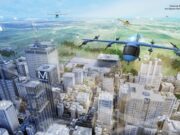The injuries most likely to occur when a small drone strikes a person are blunt force trauma, cuts and penetration injuries, according to a study conducted for the U.S. Federal Aviation Administration (FAA).
The report on the study, released last week, said researchers from a consortium of universities aim eventually to determine the risk of serious injury if a drone — also known by other terms, including unmanned aircraft system (UAS) or remotely piloted aircraft system — hits a person on the ground.
The consortium included the University of Alabama–Huntsville, Embry-Riddle Aeronautical University, Mississippi State University and the University of Kansas, all of which were conducting research through the Alliance for System Safety of UAS Through Research Excellence (ASSURE).
The study “made a start toward better understanding the risks of allowing small unmanned aircraft … to fly over people,” the FAA said.
Research included a review of techniques used in assessing blunt force trauma (identified as the most significant contributor to fatalities), lacerations (cuts) and penetration injuries, as well as a review of more than 300 publications that focus on the automotive industry and the consumer battery market. The review also included an examination of standards for toys, such as model aircraft, and the database of the Association for Unmanned Vehicle Systems International. In addition, researchers conducted crash tests, dynamic modeling and analyses involving kinetic energy, energy transfer and crash dynamics.
Preliminary findings were that “multi-rotor drones fall more slowly than the same mass of metal due to higher drag on the drone,” the report said. “Also, the lithium batteries that power many small drones need a unique standard to ensure safety.”
A new phase of research — on the risks of collisions between drones and powered aircraft — is scheduled to begin in June.



